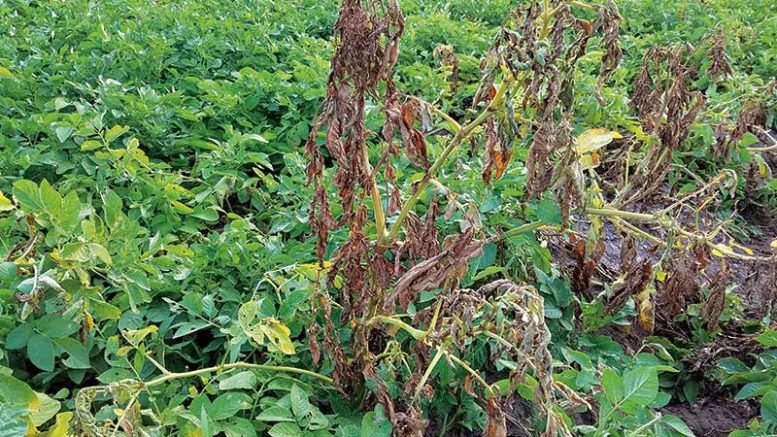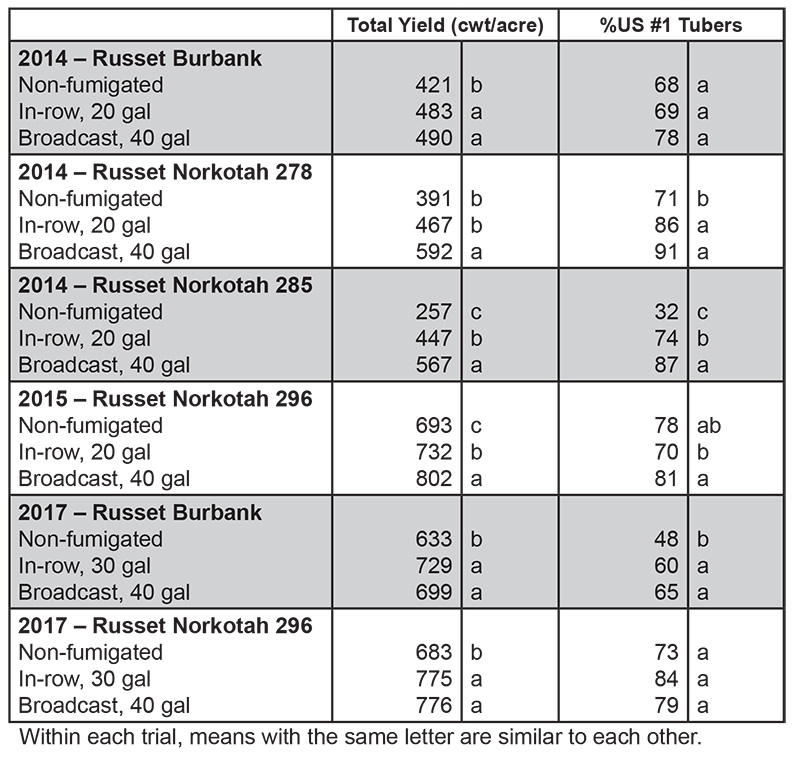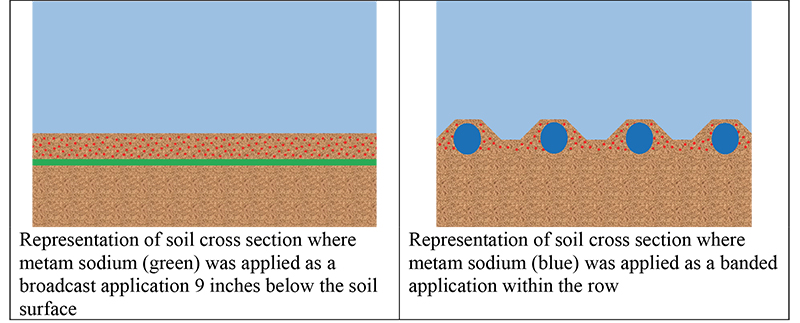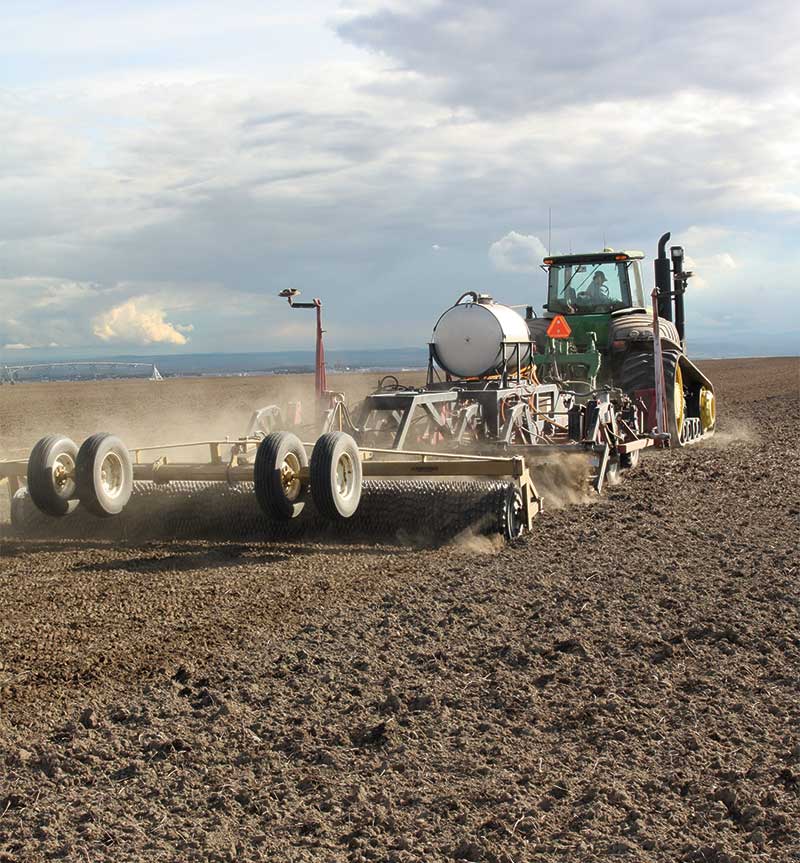By Jeff Miller, Miller Research LLC
Verticillium wilt is one of the most prevalent diseases faced by potato growers. The disease is caused by the fungus Verticillium dahliae. The fungus penetrates potato roots and grows into the water-conducting elements (xylem), plugging them so that water cannot travel up into the plant. Plants wilt and die early, thus reducing yield. Verticillium wilt can be exacerbated by the presence of root lesion nematodes. Often the disease complex resulting from the Verticillium fungus and the nematodes is called potato early dying.
Managing this disease can be done through growing resistant varieties, optimizing fertility and irrigation and by soil fumigation. Metam sodium and metam potassium fumigants are effective in reducing Verticillium propagules and reducing root lesion populations in the soil. For this reason, fumigation with metam products has been considered the most effective chemical method for managing Verticillium wilt and potato early dying. Traditionally, these fumigants have been injected as a broadcast application in the soil in the fall or spring prior to planting a potato crop.
Drawbacks to metam fumigation include the high cost and the perceived environmental impact. Metam fumigation can cost as much as $5 per gallon, and with application rates being between 40 and 60 gallons per acre, the total application costs can be between $200 and $300 per acre. If metam sodium is applied at 40 gallons per acre, the amount of active ingredient applied is 170 lb per acre. All other pesticide inputs combined on most potato crops in the Pacific Northwest do not exceed 10 lb per acre.
Several years ago, growers began to experiment with reducing the area of soil treated in order to reduce cost and to reduce the amount of active ingredient being applied to the environment. Rather than broadcast metam fumigants through the entire soil profile, fumigant was applied in a concentrated band right within the hill where the potato seed would be planted (Fig. 1). With this method, potato hills are formed as the fumigant is injected, thus saving a pass through the field. This is referred to as “in-row” fumigation in this article.
Research trials were sponsored by the Northwest Potato Research Consortium in 2014-15 and 2017 to compare broadcast and in-row metam fumigation. Each year, the trials were conducted with three treatments:
- Non-fumigated check
- Vapam applied in-row at 20 or 30 gal/acre
- Vapam applied broadcast at 40 gal/acre
These trials were conducted on ground that has a history of potato production. The results of these trials are shown in Table 1.
In 2014, metam was applied in-row at 20 gallons per acre. The trial was conducted in a commercial field where each treatment was applied in large strips and different varieties were planted within the strips. Data were collected from four different locations (pseudo-replications) within each strip. In-row fumigation resulted in similar yield and quality as broadcast fumigation for Russet Burbank. The two Russet Norkotah lines (278 and 285) were also tested, and in-row fumigation did not perform as well as broadcast for total yield. Both methods improved the percentage of US#1 tubers compared to no fumigation for both Norkotah lines, but broadcast was more effective than in-row for total yield with Norkotah 278.
In 2015, only Russet Norkotah 296 was used. This season, broadcast fumigation was more effective in terms of total yield and quality than in-row. In-row fumigation did increase yield compared to no fumigation. Neither method improved quality this year.
In 2017, the in-row rate was increased to 30 gallons per acre. With this higher rate of in-row fumigation, the differences between in-row and broadcast were not significant. Plant vigor late in the season was greatest for the broadcast metam fumigation (Fig. 2). Total yield and quality were similar and both methods provided an improvement over the non-fumigated control. For Russet Burbank, however, the percentage of 10-ouuce tubers was greatest with broadcast fumigation. This increase in size did lead to a significant increase over in-row fumigation for gross dollar return based on a fresh pack estimation. The increase was not significant when the dollar return was calculated based on a mock processing contract.
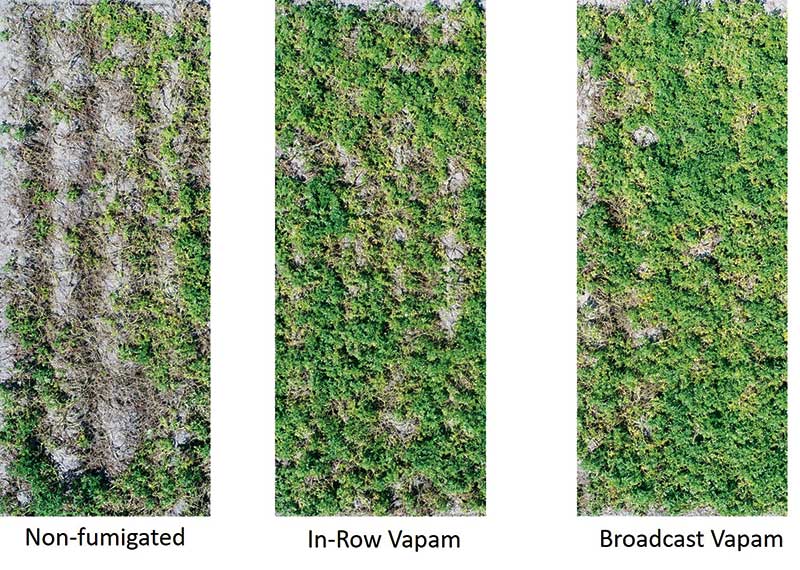
Figure 2. Aerial photographs of plant vigor in non-fumigated, in-row fumigated and broadcast fumigated plots in 2017
In all of these trials, nematode numbers were very low in the trial area. Laboratory analysis showed that Verticillium dahlia colonization in plants was reduced similarly by both in-row and broadcast fumigation. Based on 2017 results, it appears that using 30 gallons per acre may be more effective for in-row applications. This approach reduces the cost and total active ingredient load of pesticide by 25 percent. Even at the lower rate (20 gallons per acre), in-row fumigation was generally cost-effective and significantly improved potato production over no fumigation. Broadcast fumigation was the most consistent and resulted in the highest dollar return per acre in all cases.
So to broadcast or not to broadcast? In-row fumigation is an effective method for managing Verticillium wilt, especially at 30 gallons per acre, but may not always be as effective as broadcast applications. In-row fumigation would be an effective way to reduce the amount of active ingredient applied to potatoes while still allowing growers to manage Verticillium wilt.

